Meandering Magneto and enter Anthro…
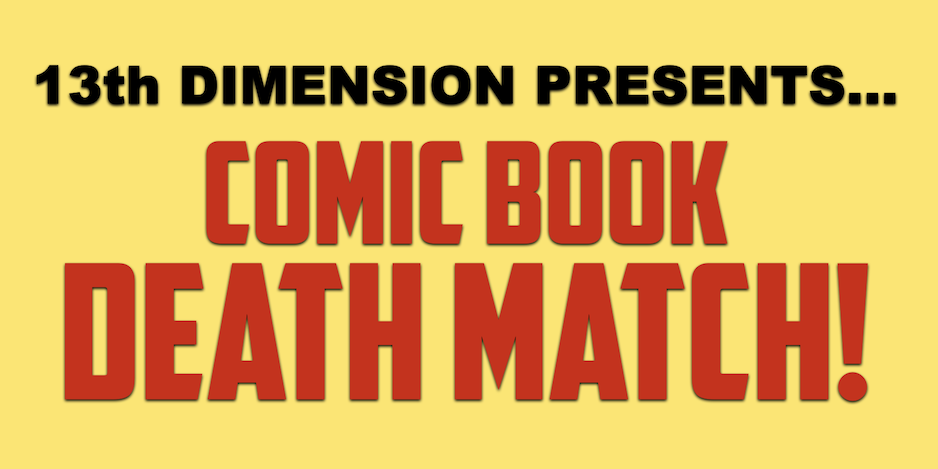
Fred Van Lente’s COMIC BOOK DEATH MATCH is back and better than ever! Now, as a monthly feature for 2024!
See, Marvel this year is celebrating the 40th anniversary of 1984’s 12-issue Marvel Super Heroes Secret Wars by re-releasing each installment as a Facsimile Edition every month. And of course, what is the DC event it’s always compared to? Why, 1985’s Crisis on Infinite Earths, of course. And that series will be re-released monthly too, starting in April!
It’s a great time to revisit two maxiseries that redefined comics for good and for bad. We’ve looked at the first issues already — now on to Round 2! (The Secret Wars #2 Facsimile Edition is out Feb. 28.)
Ring the bell, Fred!
—
By FRED VAN LENTE
SECRET WARS #2: “Prisoners of War!” (Released Feb. 28, 1984)

Magneto’s rehabilitation from generic world-conquering baddie to complex Holocaust survivor begins in earnest circa 1981’s Uncanny X-Men #150, in which he feels bad about (apparently) murdering a teenager because she kind of reminds him of his daughter. Now, some might argue that this just proves Magneto lacks empathy for people who don’t share specific parts of his background, but hey, all recovering narcissists have to start somewhere, right?
(BTW, back in the day I wrote a sequel to Uncanny X-Men #150 I’m really proud of and Scott Koblish drew the hell out of it, check it out if you get the chance.)
What does this have to do with Marvel Super Hero Secret Wars #2, you ask? Not much, except that it is a comic book written by Jim Shooter, the same editor-in-chief who insisted Jean Grey get killed off for genociding an entire planet while she was possessed by an Evil Space Bird.

Moral ambiguity in X-villains is not really his comfort zone, is what I’m saying, which might explain why the action of this comic is so confused.
Last issue, Professor X even showed up on Battleworld in a wheelchair, when he can walk just fine in Uncanny, Marvel’s best-selling regular series. This continuity oopsie is amusingly hand waved here by Reed Richards saying that The Beyonder “fixed little things that seemed to be wrong, or missing.” Little things, Mr. Fantastic? More like Mr. Ableist, am I right?!
I wonder if at one point the big reveal of this series was going to be that “The Beyonder” is an eight-year-old blithely playing with his Marvel Super Heroes Secret Wars toys, like the ending of The Lego Movie. The heroes, Dr. Doom, and Magneto all find conveniently uninhabited playsets—er, fortresses lying around Battleworld. Captain America convenes a meeting of the heroes on “the four-hundred and fifty-first level” of their base, which, uh, is a lot of levels.

Late that night, Magneto leaves his own base and breaks into the heroes’ on one of its 450 other levels to sabotage their power plant because, um…
…look, I don’t really know why Magneto is doing this, and I’m pretty sure Jim Shooter doesn’t either. It’s just a knee-jerk villain thing to do, which contradicts all the character development Magneto has enjoyed the last few years (and, for that matter, in the previous issue of this very series). The heroes conveniently interrupt his B&E before he has to explain himself. He flees, taking the Wasp hostage in the process.
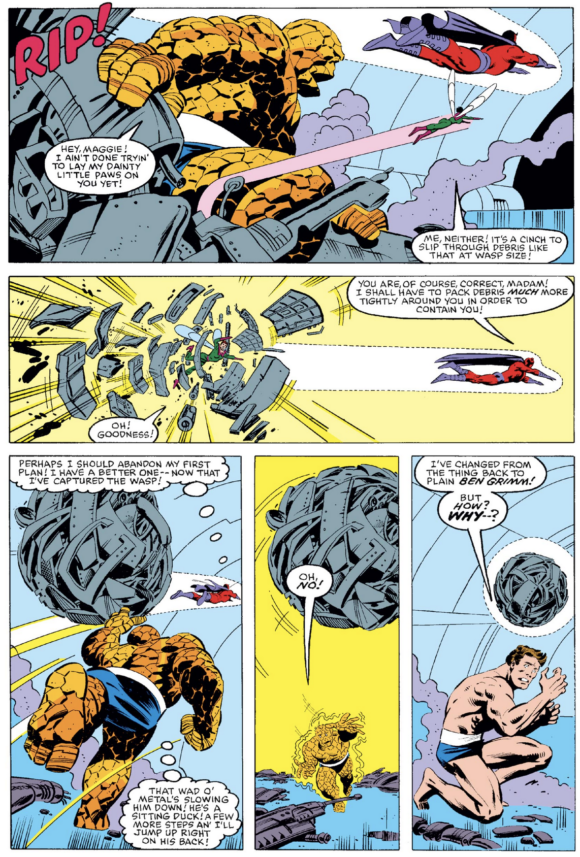
I’m getting the sneaking suspicion Shooter may be making this up as he goes along. Zeck’s art, at least, is, as always, marvelous.
—
CRISIS ON INFINITE EARTHS #2: “Time and Time Again!” (Released Jan. 15, 1985)
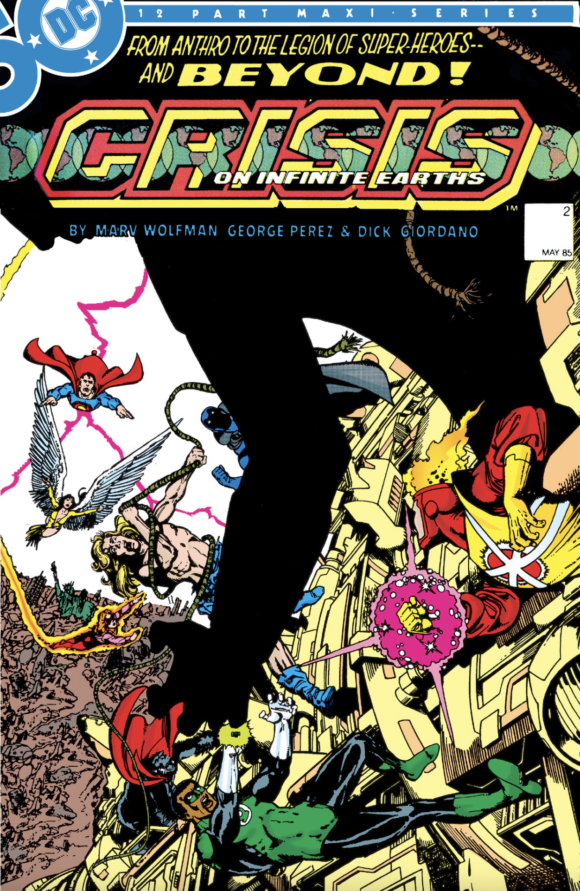
Supposedly Marv Wolfman pitched this series as The History of the DC Universe, and here we get the first and last chapter of that history in a single issue: We start with cave boy Anthro, who drives a mammoth herd through a time shift into the 30th century, where they stampede through “Plaza Square.” Apparently, in the future, they’re into redundancy, apparently.
Can I risk your Fan Hate by confessing that I don’t really “get” the Legion of Super-Heroes? I think it’s the awkward fusion of far-future sci-fi with the superhero genre that’s never clicked for me. You’re taking two ridiculous things and removing them from anything resembling relatable reality by mashing them together. There’s a reason Booster Gold decided to come to the 20th century rather than stick around the far future, where tech makes the average person super.
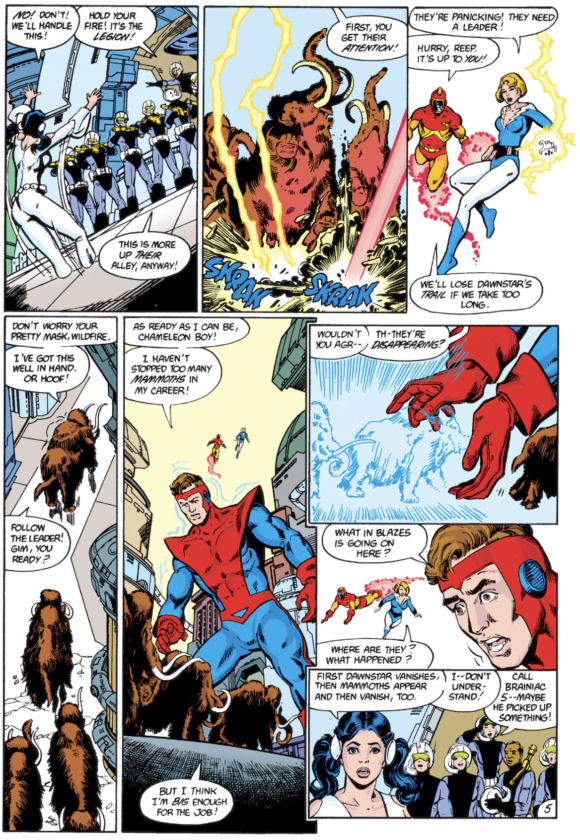
Are we to understand that in the 30th century, society hasn’t figured out a better way to take care of a time-tossed mammoth herd other than their first choice, a laser gun firing-squad, or their second, Colossal Boy, a guy who can grow real tall? The internet tells me Colossal Boy’s real name is “Gim Allon.” Shut up. I’m calling him Jim Allen. Also, Jim, you are obviously a colossal man. Stop living in the past.
Then the scene shifts to Gotham City, where, on the cusp of Frank Miller’s Batman reinvention, we get the last gasp of a quaint kind of post-1966 Caped Crusader adventure from longtime Bat-scribe Wolfman. The Joker has murdered a silent movie mogul with his smiley gas to, ironically, rip off the guy’s copyrights, when the Harlequin of Hate is plagiarizing his own “Laughing Fish” schtick.
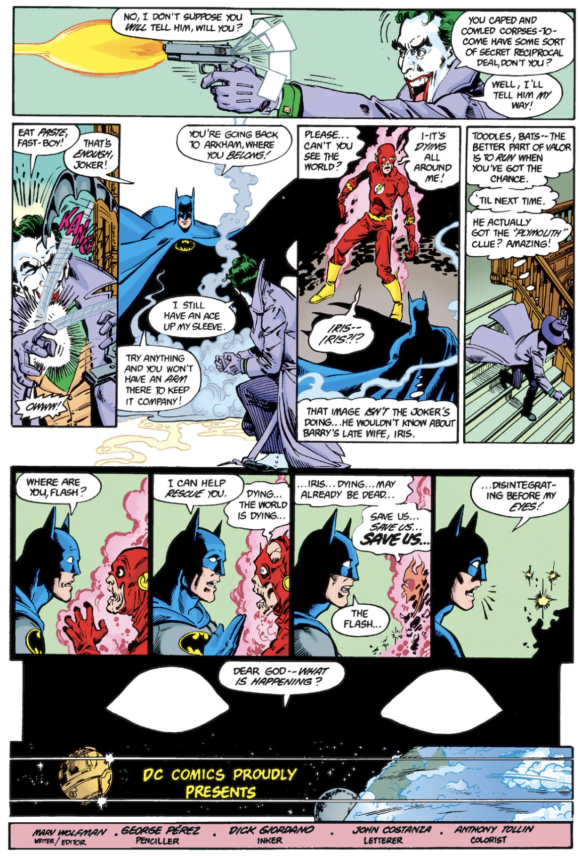
Batman smashes through the window to kick clown ass because this soon-to-be-erased version of the Joker left clues to track him down (adorable). Their fight is interrupted by the arrival of a disintegrating Flash, who predicts the death of the universe if Bats doesn’t do—well, something. As the whole concept of the multiverse famously first appeared in the Flash’s book, there’s something thematically powerful about his death heralding the destruction of that multiverse.
Though I suspect Albert Einstein would look at you like you were a crazy person if you tried to explain how a guy who runs real fast can be a master time traveler. (Apropos of nothing, I didn’t think The Flash movie was all that bad, except for the end when CGI Super-Nick Cage showed up out of nowhere.)

Having subjected myself to the entirety of the Gardner Fox Justice League run for the inaugural Comic Book Death Match, I admire the formalist structure of the rest of the issue, in which the Monitor dispatches mismatched teams of heroes across time to destroy the MacGuffin Towers crucial to the plan of our as-yet-unrevealed Big Bad. This is pretty much the formula for every Fox JLA plot, so just as Crisis #1 opens with a baby being shot off in a rocket from a dying world, Wolfman and Perez continue to check all the Classic DC Trope boxes as the current iteration of its multiverse approaches its demise.
I also like that we opened with “First Boy” Anthro, and bookend this issue with Kamandi, “The Last Boy on Earth.” Though I’ve said Kamandi is my least favorite Kirby DC creation, at least I (mostly) understand what’s going on in this story, which is more than I can say for Secret Wars.
ROUND TWO WINNER: CRISIS
—
Our Tally So Far: CRISIS 1, SECRET WARS 1
—
MORE
— COMIC BOOK DEATH MATCH: Secret Wars #1 vs. Crisis on Infinite Earths #1. Click here.
— The Complete COMIC BOOK DEATH MATCH Index. Click here.
—
13th Dimension contributor Fred Van Lente is an award-winning, New York Times-bestselling comics writer, as well as an occasional novelist, teacher, and playwright. Sign up for updates on his upcoming projects and check out the trailer for his comics-writing course at his web site, fredvanlente.com.

February 24, 2024
Re-visiting these stories is like watching the Bronze Age die all over again. Darkness is moving over the world of comics….and, I don’t mean the Monitor or Beyonder.
February 24, 2024
I have a feeling that Crisis is going to win though Secret Wars has the potential to score a couple of points at issue 9 and 10.
I just finished a reread of SW last month, probably the 1st full reread since it came out. Crisis, well I’ve reread that a few times.
Maybe those paragraphs should have been in the opposite order.
February 25, 2024
The heroes are actually dispatched to protect the “MacGuffin Towers”, which are key to the Monitor’s plan to save the Multiverse from the as yet unrevealed Big Bad.
February 26, 2024
I stand corrected!
February 29, 2024
I didn’t real Crisis at the time, and I’ve tried several times to read it later on but I just give up. Maybe it’s the older story telling. I don’t know. I guess it starts out rather slow.